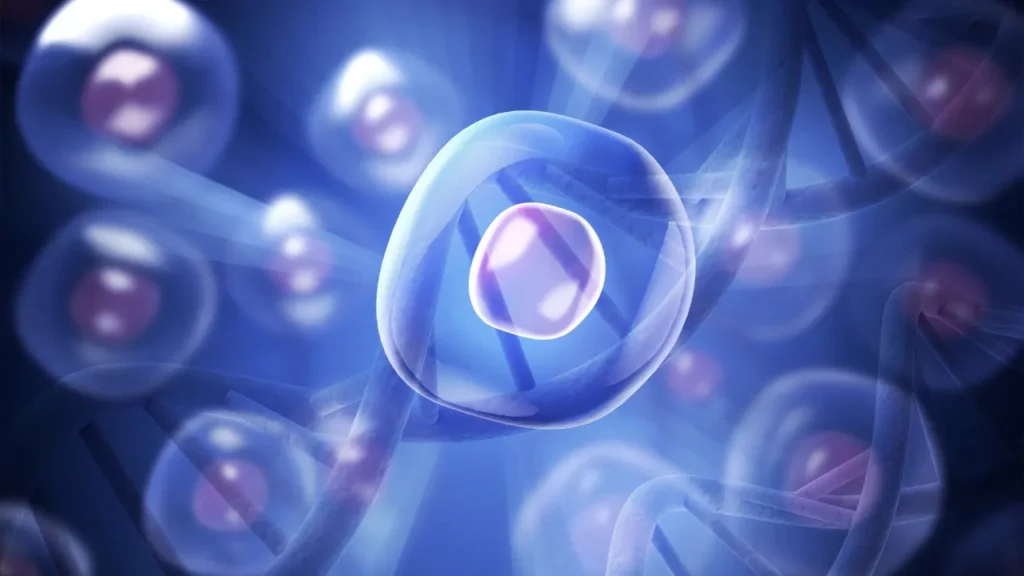Rabdosia rubescens is a perennial herb found primarily in East Asia. This plant has sparked interest in both traditional and modern medicine for its potential health advantages, particularly cognitive enhancement. This herb from the Lamiaceae family has been traditionally utilized for its anti-inflammatory, anticancer, and analgesic effects. However, current research has focused on its potential as a nootropic. This article investigates Rabdosia rubescens’ chemical ingredients, physiological mechanisms, ideal dosages, side effects, substance interactions, and responsible use guidelines to maximize its cognitive advantages.
You May Also Like:
Sunmed CBD vs. Partnered Process CBD: Finding the Best CBD for Sleep
Squalamine: Benefits, Dosage, Side Effects, Drug Interactions, and Other Important Information
Rabdosia Rubescens: Benefits, Dosage, Side Effects, Drug Interactions, and Other Important Information is an original (NootropicsPlanet) article.
Nature of Rabdosia Rubescens
Rabdosia rubescens is sometimes known as Isodon rubescens. Rabdosia rubescens is a herbaceous plant endemic to East Asia, including China, Japan, and Korea. This plant grows in hilly areas and is distinguished by its purple flowers and square stems, which are common characteristics of the mint family, Lamiaceae. It has long been utilized in Chinese medicine to treat a variety of diseases due to its wide pharmacological qualities.
Health Benefits of Rabdosia Rubescens
Antioxidant and Neuroprotective Effects
One of the key health benefits of Rabdosia rubescens is its high antioxidant content. The plant’s diterpenoids, especially oridonin, have been shown to scavenge free radicals and protect against oxidative stress, a major contributor to aging and many chronic diseases which include neurological disorders. Rabdosia rubescens promotes the health of cells and tissues, including those in the nervous system, by minimizing oxidative damage.
Anti-inflammatory Properties
Inflammation is the underlying cause of many diseases. Rabdosia rubescens has been proven to have powerful anti-inflammatory properties, which are thought to be mediated via inhibiting inflammatory cytokines and modulating signaling pathways such as NF-kB, a critical regulator of immune response. These qualities make the herb potentially advantageous not only for cognitive health but also for illnesses such as arthritis in which inflammation is a major contributing factor.
Anticancer Potential
One of the most researched benefits of Rabdosia rubescens is its anticancer properties. Oridonin and other herb components have been shown to cause apoptosis (programmed cell death) in a variety of cancer cell lines, including breast, colon, and lung malignancies. The mechanisms behind its anticancer actions include disruption of cell division, suppression of metastasis, and regulation of the immune response to cancer cells.
Cardiovascular Health
Rabdosia rubescens may potentially improve cardiovascular health by lowering blood pressure and preventing atherosclerosis. Anti-inflammatory and antioxidant capabilities serve to prevent cholesterol oxidation and plaque formation in arteries, both of which are major causes of heart disease and strokes.
Support for Mental Health
Rabdosia rubescens has anxiolytic characteristics, making it a potential treatment for anxiety and stress-related diseases. Rabdosia rubescens may induce relaxation and reduce the effects of stress on the body and mind by possibly increasing GABAergic activity. The GABAergic activity is the main system that mediates inhibitory neurotransmission in the brain.
Immune System Modulation
Rabdosia rubescens may improve immune system function by modifying immunological responses and increasing the activity of white blood cells. This adaptogenic impact allows the body to fight infections and recover faster from diseases.
Diabetes and Metabolic Health
Emerging data suggests that Rabdosia rubescens may help manage blood sugar levels and improve metabolic health. Its components have been shown to enhance insulin sensitivity and lower blood glucose levels, which are critical for preventing and controlling type 2 diabetes.
Rabdosia rubescens has a wide range of health advantages, owing to its powerful anti-inflammatory, antioxidant, and anticancer qualities. While its usage in cognitive enhancement appears promising, its broad pharmacological profile implies that it might be used in a variety of therapeutic regimens to promote overall health and well-being. Additional studies and clinical studies will be required to properly unlock and comprehend the potential of this formidable herb.

Chemistry of Rabdosia Rubescens
Rabdosia rubescens’ chemistry is distinguished by a wide range of bioactive chemicals, the most prominent of which are diterpenoids, which have been researched for their pharmacological potential. Rabdosia rubescens’ principal bioactive ingredient is oridonin, a kaurane-type diterpenoid noted for its powerful biological properties. Other important diterpenoids include ponicidin, rabdoternins, and rubescensin. These compounds are distinguished by distinctive ring structures, which contribute to their stability and bioactivity.
In addition, Rabdosia rubescens contains flavonoids, phenolic acids, and essential oils. Examples of flavonoids include luteolin and apigenin which are known antioxidants. Phenolic acids enhance antioxidant activity and may potentially carry antibacterial properties. Although minute amounts of essential oil can be found in the plant, they contribute to the plant’s therapeutic characteristics, including anti-inflammatory and antibacterial activity.
Hence, the interplay of these chemicals within the body’s biochemical milieu is crucial to the pharmacological effects noticed when Rabdosia rubescens is used.
Physiological Mechanism of Action of Rabdosia Rubescens
Neuroprotective and Cognitive Enhancing Actions
The primary action of oridonin and other diterpenoids in Rabdosia rubescens on cognitive functions involves neuroprotection which is facilitated through several pathways shown below:
- Antioxidant Activity: Oridonin enhances the body’s antioxidant defense system, reducing oxidative stress and preventing oxidative damage to neurons. This is crucial for maintaining neuronal integrity and function, particularly in aging populations and neurodegenerative conditions.
- Anti-inflammatory Effects: Chronic inflammation is a significant contributor to neurodegeneration. Oridonin inhibits key inflammatory pathways by downregulating the activity of NF-kB and reducing the production of pro-inflammatory cytokines like TNF-alpha and IL-6. This modulation of inflammatory response helps preserve cognitive functions and neuronal health.
- Modulation of Neurotransmitter Systems: There is evidence suggesting that components of Rabdosia rubescens can influence neurotransmitter levels, particularly acetylcholine, which plays a vital role in memory and learning. By potentially enhancing cholinergic transmission, Rabdosia rubescens could improve cognitive processes such as alertness, learning, and memory retention.
Anticancer Mechanisms
The anticancer properties of Rabdosia rubescens are largely attributed to the apoptosis-inducing action of oridonin. Oridonin triggers cell death in cancer cells through several mechanisms:
- Induction of Apoptosis: Oridonin initiates apoptosis by activating caspase enzymes, which are essential for the execution of cell death. It also affects the mitochondrial pathway, which leads to the release of cytochrome c, a critical step in apoptotic signaling.
- Cell Cycle Arrest: Oridonin has been shown to interfere with the cell cycle in cancer cells, causing arrest at specific phases (e.g., G2/M phase), thereby inhibiting cell proliferation and growth.
- Inhibition of Metastasis: Through modulation of various signaling pathways, oridonin can inhibit the processes involved in cancer metastasis, including cell adhesion, migration, and invasion.
Cardiovascular and Metabolic Effects
Rabdosia rubescens promotes cardiovascular health primarily through anti-inflammatory and antioxidant properties. These actions serve to decrease atherosclerosis by decreasing the oxidation of low-density lipoprotein (LDL) cholesterol and inhibiting inflammatory processes in the vascular endothelium. Furthermore, Rabdosia rubescens may improve vascular reactivity and lower blood pressure, benefiting cardiovascular health. Additionally, components of Rabdosia rubescens may improve insulin sensitivity and glucose uptake in tissues, helping to control blood sugar levels and lowering the risk of type 2 diabetes.
Overall, Rabdosia rubescens’ various chemical contents interact with multiple physiological pathways to provide a variety of health benefits, including cognitive enhancement, cancer prevention, and enhanced metabolic and cardiovascular function. More research is required to completely understand these mechanisms and optimize the medicinal usage of this herb.

Optimal Dosage of Rabdosia Rubescens
The appropriate dosage of Rabdosia rubescens for cognitive enhancement is difficult to determine because of variability in extract content and individual physiological variables. The majority of clinical research has used dosages ranging from 10 to 30 mg/kg of oridonin in animal models, however, human trials are scarce, thus extrapolation should be done with caution.
For human ingestion, it is recommended to start with smaller doses and gradually increase to check tolerance and effectiveness. There are existing methods that can encapsulate the dried herb extracts thereby standardizing the specific amount of oridonin. This allows for more accurate dosing.
Potential Side Effects of Rabdosia Rubescens
Rabdosia rubescens, like any other pharmacologically active substance, can cause negative effects. Although traditionally regarded as safe, excessive doses and long-term use of this supplement have been linked to hepatotoxicity and gastrointestinal problems in some individuals. These side effects emphasize the importance of restricted dosage and the probable need to monitor liver enzymes during long-term use.
Potential Substance of Interactions of Rabdosia Rubescens
Rabdosia rubescens may interact with other drugs, notably those processed by liver enzymes called CYP450s. For example, its components may block these enzymes potentially increasing both therapeutic effects and the risk of side effects. Individuals taking prescription drugs, particularly those for chronic diseases, should check their doctors before beginning any regimen that includes Rabdosia rubescens.

Best Responsible Use of Rabdosia Rubescens
Consultation with Healthcare Providers
Before beginning any new supplement regimen, it is critical to check with a healthcare expert. This is especially crucial for people who have pre-existing health conditions or are taking other medications to ensure their safety and avoid negative interactions.
Starting with Low Doses
Owing to the strong active ingredients in Rabdosia rubescens, it is best to begin with a minimal dosage in order to determine effectiveness and individual tolerance. The body can safely adjust to a dose increase by doing so gradually.
Adhering to Recommended Dosages
The dose recommendations made by medical professionals or determined by clinical research should be closely followed by users. Overdosing can reduce the desired health advantages and raise the chance of negative consequences.
Monitoring for Side Effects
Some people may experience negative effects from Rabdosia rubescens, even when used safely. Gastrointestinal distress and perhaps hepatic stress are typical adverse effects. Also, when serious side effects arise, users should stop using the product and keep an eye out for any unexpected symptoms.
Duration of Use
Rabdosia rubescens long-term use should be handled carefully. It is best to stick to the suggested time frames for use, taking breaks, or stopping as directed by a healthcare professional in between. This tactic aids in mitigating possible long-term negative consequences.
Regular Medical Review
Regular medical reviews support the monitoring of the safety and effectiveness of the supplement, as well as the modification of dosages or usage in response to changes in health and advances in medical research.
Awareness of Drug Interactions
Users should be cautious of possible interactions as Rabdosia rubescens can interact with other medications, especially those processed by liver enzymes like CYP450. A healthcare provider should be consulted about any current medications in order to control risks and guarantee safe use.
Rabdosia Rubescens:
Conclusion
To conclude, Rabdosia rubescens is a perennial herb that is mostly found in East Asia and is distinguished by its purple flowers and square stems. From the article, it is clear that this plant has various health benefits that range from antioxidant effects to regulating blood sugar levels. Part of its alleged health benefits still need extra support from future research data and clinical trials, however, its chemical makeup and physiological action have shown the plant’s potential as a nootropic and a powerful dietary supplement.
Before you purchase Rabdosia rubescences to use as a supplement, you need to check the safety and its usage with your doctor as individual responses to this supplement may vary. Be extra careful if you are using any medications that are metabolized by the liver since this supplement may interact with those drugs.

References:
- Chen, X., Dai, X., Liu, Y., He, X., & Gu, G. (2022). Isodon rubescens (Hemls.) Hara.: A Comprehensive Review on Traditional Uses, Phytochemistry, and Pharmacological Activities. Received from: Frontiers in Pharmacology, 13.
- Ali, M. A., Khan, N., Ali, A., Akram, H., Zafar, N. I., Imran, K., Khan, T., Khan, K., Armaghan, M., Palma‐Morales, M., Rodríguez‐Pérez, C., Caunii, A., Butnariu, M., Habtemariam, S., & Sharifi‐Rad, J. (2024). Oridonin from Rabdosia rubescens: An emerging potential in cancer therapy – A comprehensive review. Retrieved from: Food Science & Nutrition.
- Li, X., Zhang, C., Ma, W., Xie, X., & Huang, Q. (2021). Oridonin: A Review of Its pharmacology, pharmacokinetics and Toxicity. Retrieved from: Frontiers in Pharmacology, 12.
Important Note: The information contained in this article is for general informational purposes only, and should not be construed as health or medical advice, nor is it intended to diagnose, prevent, treat, or cure any disease or health condition. Before embarking on any diet, fitness regimen, or program of nutritional supplementation, it is advisable to consult your healthcare professional in order to determine its safety and probable efficacy in terms of your individual state of health.
Regarding Nutritional Supplements Or Other Non-Prescription Health Products: If any nutritional supplements or other non-prescription health products are mentioned in the foregoing article, any claims or statements made about them have not been evaluated by the U.S. Food and Drug Administration, and such nutritional supplements or other health products are not intended to diagnose, treat, cure, or prevent any disease.


